AJP D500E – Gaming Notebook Review
AJP D500E – Gaming Notebook
This AJP may not be the smallest or lightest notebook around. But if you want a high-powered gaming notebook at a decent price, the D500E will be a tempting prospect.
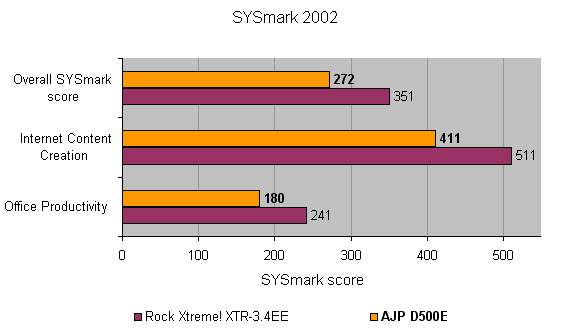
Verdict
Key Specifications
- Review Price: £1526.00
True hardcore gaming notebooks are the play things of the elite. We’ve seen this in recent months with machines like the Voodoo Envy M:860 and current speed king the Rock Xtreme! XTR-3.4EE. These are big, burlesque units which easily smash the £2,000 bracket and keep on going. But things are about to change because the D500E from AJP stands toe to toe with these heavyweights while slicing nearly a grand off their price tags.
Now take a good look at the XTR-3.4EE and then take a good look at the AJP D500E. Notice any differences? Externally there are none – that is because they both use exactly the same chassis. This is a very good thing because from the moment we start talking “value” it is understandable to look for shortcuts. Consequently, we can close one door immediately: the AJP has no issues of build quality compared with its main rival since it literally shares the same skin.
Although the chassis is the same as the one used by Rock, the screen is very different. Rock used a 1,400 x 1,050 panel with an X-Glass coating, giving it a very bright and vibrant image that was ideal for games. Unfortunately the AJP doesn’t use the same coating and the image is definitely less imposing than the one seen on the Rock. However, AJP has put a higher resolution panel in, meaning that the D500E has a native resolution of 1,600 x 1,200, giving you an impressive amount of desktop real estate for a 15in screen.
Internally, however, things are a little different. Driving the D500E is a P4 3.4GHz chip, not an Extreme Edition like the one found in the XTR-3.4EE, though it does pretty much match the M:860 and has with a full megabyte of Level 2 cache. It also comes with 512MB RAM as opposed to the 1GB that ships with each of its rivals and the capacious 80GB hard drive spins at 4,200rpm instead of 7,200rpm. Other than that the specifications between all three are fairly similar which is no mean feat considering the gaping monetary chasm between the D500E and the other two. You get the same high end ATI Mobility Radeon 9700 graphics chipset with 128MB of RAM, a Sony DW-U54A DVD rewriter – the exact same model used in the XTR-3.4EE – and the identical audio set up with integrated subwoofer.
In fact, given that the D500E is built using the same shell as the XTR-3.4EE you get all the same extensive connectivity options: Type II PC Card slot, IrDA port, PS/2, parallel and serial ports, D-SUB, S-Video, four USB 2.0 ports, two FireWire, Gigabit Ethernet, modem, line out/optical output, headphone socket and microphone. You also get the same legacy floppy disk drive but this can similarly be swapped for optional extras such as a second battery, 6-in-1 card reader, DVD/CD-RW drive or removable second hard drive, and at this price you can afford to upgrade. If you have a wireless network in your home or office, you’ll also be able connect to it via the integrated 802.11g WiFi adapter.
Naturally, you get the same solidly constructed, user friendly keyboard as that on the XTR-3.4EE as well, which benefits from the same practical layout, matching audio controls and LCD display at the front of the case so you can play CDs without needing to boot into Windows. Ultimately, the more I look at the AJP, the more I think this is the sale of the century.
Now that is a bold statement, especially considering there are some technical reductions in the AJP, but the fascinating thing is that it seems to make almost no difference where it matters in testing: the games. The D500E scored a superb 45.57 fps on X2: The Threat, nearly five frames faster than the M:860 and only three frames behind the XTR-3.4EE. Similarly, its results in 3DMark 2001 SE and 3DMark03 were equally excellent achieving overall results of 12,810 and 3,765 respectively. These are a long way ahead of the M:860 and very close to the XTR-3.4EE. It was the same story in AquaMark3 where an average fps of 30.08 blitzed the M:860’s 24.9 and came within a whisker of the XTR-3.4EE’s 31.4fps. So in real world terms, the AJP is a considerably faster performer than the Voodoo Envy M:860 and pretty much indistinguishable from current speed leader the XTR-3.4EE.
When it came to the Windows based tests, the extra RAM in the D500E’s rivals did turn things round a little. In SYSmark 2002, the D500E slipped behind the XTR-3.4EE in each test, although it did manage to keep pace with the M:860. But switching to PCMark 2004 we once again saw the remarkable performance of the D500E where, excluding the hard drive, it comprehensively outpaced the Envy M:860 and kept pace with the XTR-3.4EE.
So where are the downsides in all of this? Well, the most obvious answer is battery life where the D500E shares the same shortcomings as the XTR-3.4EE. Like the XTR-3.4EE, we could not even get a MobileMark score, such was the brevity of the battery, but rough estimates suggest no more than 30 minutes of gaming off a full charge and little more than an hour using Windows applications. In contrast, this was the M:860’s strong point, lasting 143 minutes in MobileMark and offering a genuine mobile gaming experience. However, this will cost you an extra thousand pounds.
If there is one other area of contention with the D500E, it’s the noise. Even performing simple Windows tasks, the D500E rumbles like a passenger jet approaching the runway and when intensive gaming starts it sounds like take off. Still, this is a problem that also afflicts the XTR-3.4EE and when playing games; it will be drowned out by the impressive speakers or blocked out by a pair of headphones.
In conclusion, I have to say I’m very impressed. Not only do we have a serious contender to the speed crowns of some ultra expensive laptops for a knock down price, it even sports the exact same casing as the current champ. Value gaming has arrived in the notebook market, and not a minute too soon.
”’Verdict”’
It is extremely difficult to criticise a machine that beats every laptop bar one that we have had in the office and at the same time knocks hundreds off the price, so I won’t. AJP has also informed us it intends to shave a further £75 from the price listed above from 23rd August 2004. For gamers on a budget there is now nothing to hold you back. A well deserved Recommended Award.
(table:features)

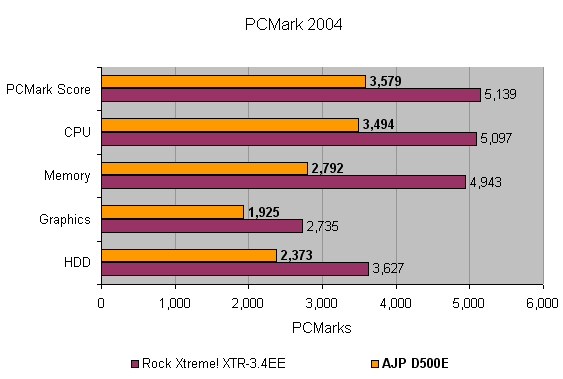
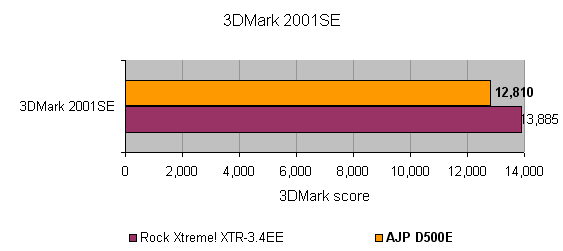
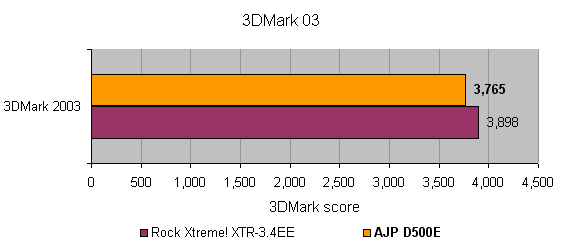
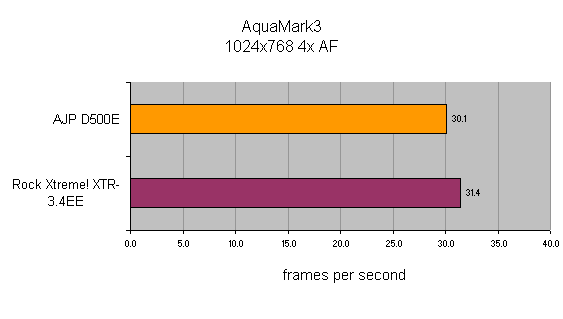
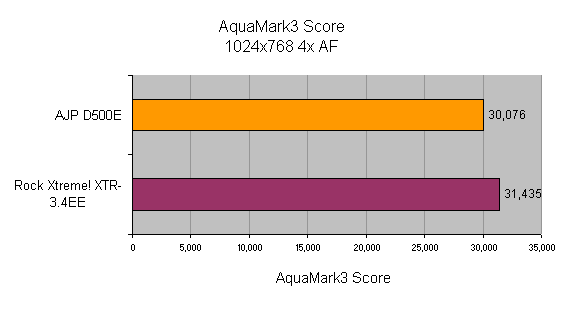
How we test laptops
Unlike other sites, we test every laptop we review thoroughly over an extended period of time. We use industry standard tests to compare features properly. We’ll always tell you what we find. We never, ever, accept money to review a product.
Trusted Score
Score in detail
-
Performance 10
-
Value 9
-
Features 9

